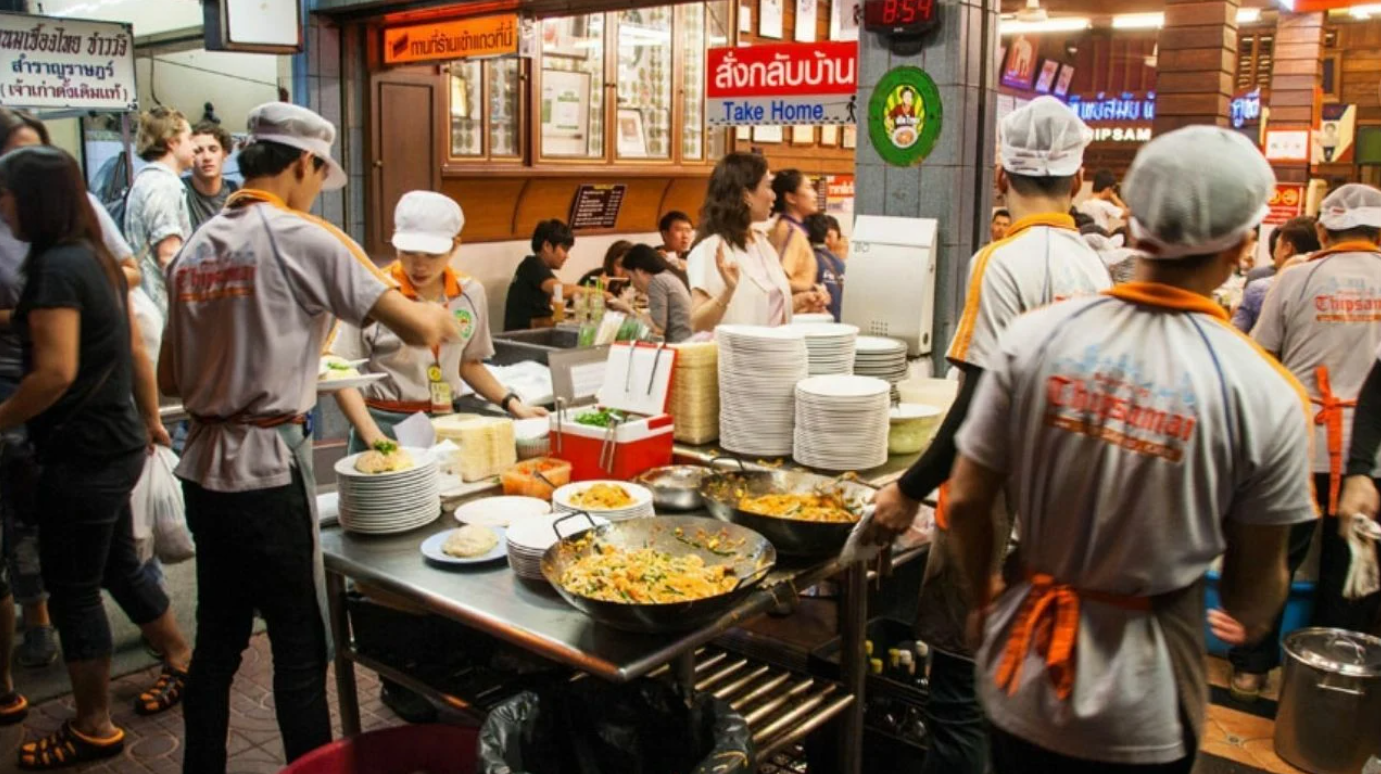Thailand’s restaurant scene is sizzling—but not in a good way. With pockets already tight after tourism dips, this new wave of wage increases—pegged at a flat 400 Baht daily in many provinces—has chefs, owners, and small eateries feeling the heat. Let’s flip over this hot topic and see how it’s cooking.
What’s Cooking? Understanding the 400 Baht Wage Hike
If you’ve been following Thai headlines, you’ve probably seen chatter about the minimum wage jump to 400 Baht a day. Here’s the lowdown:
-
Introduced by the wage committee for October 1, 2024, this hike affects large businesses in tourist hotspots—Phuket, Pattaya, Samui, Rayong, Chiang Mai, Bangkok (zones), etc..
-
Small to mid‑sized restaurants now face a wage increase of roughly 30–70 Baht extra per worker each day—an unplanned ingredient in their cost recipes .
So yes, it’s real—and it’s already spicing up the bottom line.
Why Restaurants Are Feeling the Burn
Profit Margins Shrinking Faster Than Sticky Rice
Think of it like adding more spice—you like the flavor, but misjudge it and you spoil the dish. A sudden 10–15 % jump in labor costs means restaurants need to rethink pricing—and many simply can’t.
-
In tourist-driven zones like Chon Buri and Phuket, costs jumped to 400 Baht per staffer daily, whereas Bangkok sits at around 372 Baht.
-
Many small eateries operate on margins thinner than a rice paper spring roll—this is more than just a pinch; it’s a squeeze.
Uneven Impact—Big Chains vs. Local Stalls
Bigger restaurants or hotel‑affiliated outlets might absorb higher wages with scale, but mom‑and‑pop shops? They’re sweating.
-
Larger employers (>200 staff) can spread cost across numerous customers; tiny stalls can’t.
-
That’s why foreign chambers of commerce and Thai business organisations say this hike favors big players, leaving smaller restaurants gasping.
Side‑by‑Side Comparison of Key Challenges
| Restaurant Type | Before Wage Hike | After Wage Hike | Main Pressure Points |
|---|---|---|---|
| Small street‑food cart | 330–370 Baht/day per worker | 400 Baht in tourist zones | Reduced profit per dish; unsecured inflation risks |
| Local family restaurant | 340–380 Baht/day | 400 Baht flat | Meals must cost more or staff go underpaid |
| Chain outlet or hotel | ~400 Baht + service + perks | Minor impact due to high turnover rates | Slight margin dip; higher staff wage standard |
| Fine‑dining | Variable + tips | Wage mandate hits lower-paid roles | Menu pricier; clientele may react poorly |
Broader Effects—What Does This Mean for Diners & Tourism?
Price Tag Shock for Customers
If wage expense soars, menu prices follow. A bowl of Pad Thai might go up 10–20 Baht. Not earth‑shattering—but for locals, a daily lunch tab rising 10 % is felt in the wallet.
Tourism Woes or Wins?
More money for staff means more spending in an ideal model—but only when tourism is booming. Today?
-
Tourism is slow to rebound; Bangkok and Phuket still have under‑used tables.
-
If restaurants hike prices too fast, they risk losing tourist traffic before lower‑spending locals pick up the slack.
Pushback from the Food‑Service World
Big Business Says “It’s Too Soon”
Trade groups point out that a national, across‑the‑board wage increase doesn’t factor in Thailand’s varying regional economies.
Perspective from Benar News:
“If companies can’t hire people, many will be unemployed… Consumers will have to bear the increase in the price of goods and services.”
They suggest incremental hikes tied to local productivity—not a blanket levy.
Small Businesses Cry for Support or Delay
Local restaurant owners are requesting:
-
Delay or phased wage hikes by region.
-
Tax breaks or subsidies on fuel, electricity, and other operating costs.
-
Training programs to help workers increase skills—justify their higher pay.
Can Restaurants Weather the Storm?
Smart Adjustments That Help Stay Afloat
There are ways to make it through:
-
Menu tweaks: Focus on high‑margin dishes, drop wasted items.
-
Tech & efficiency: Self‑order tablets, tighter scheduling, batch prep.
-
Upskill staff: Multi‑skilling servers to prep makes labor flexible and cheaper.
-
Value combos: Keep customer‑perceived value high even if prices inch up.
Government Role—Support Needed
The government could:
-
Offer utility subsidies or tax incentives for small eateries.
-
Provide training and skill grants tailored to food service.
-
Roll out gradual wage rise frameworks tied to economic indicators.
Big Picture—Why This Matters Beyond Chatuchak
This wage raise is more than a labor policy: it’s a test of Thailand’s economy.
-
Wage vs. price spiral: Costs rise → prices hike → inflation expectations rise → costs rise again.
-
Tourism bounce-back risk: Higher costs set off before tourists flood back could hamper broader recovery.
-
Labor market fairness: If small businesses can’t compete, inequality widens—some workers lose jobs or shift to informal sectors.
Conclusion
The 400 Baht minimum wage is like tossing chili into a simmering pot—it adds flavor but can burn the dish if mismanaged. For restaurants, especially small ones, it’s a challenge requiring creativity, efficiency, and external support. Big players might adjust, but tiny stalls and family joints need that lifeline—government assistance, phased implementation, smart cost control. Done right, this can be a win for workers and businesses. Misstep, and the entire food‑service scene could lose its spice.
